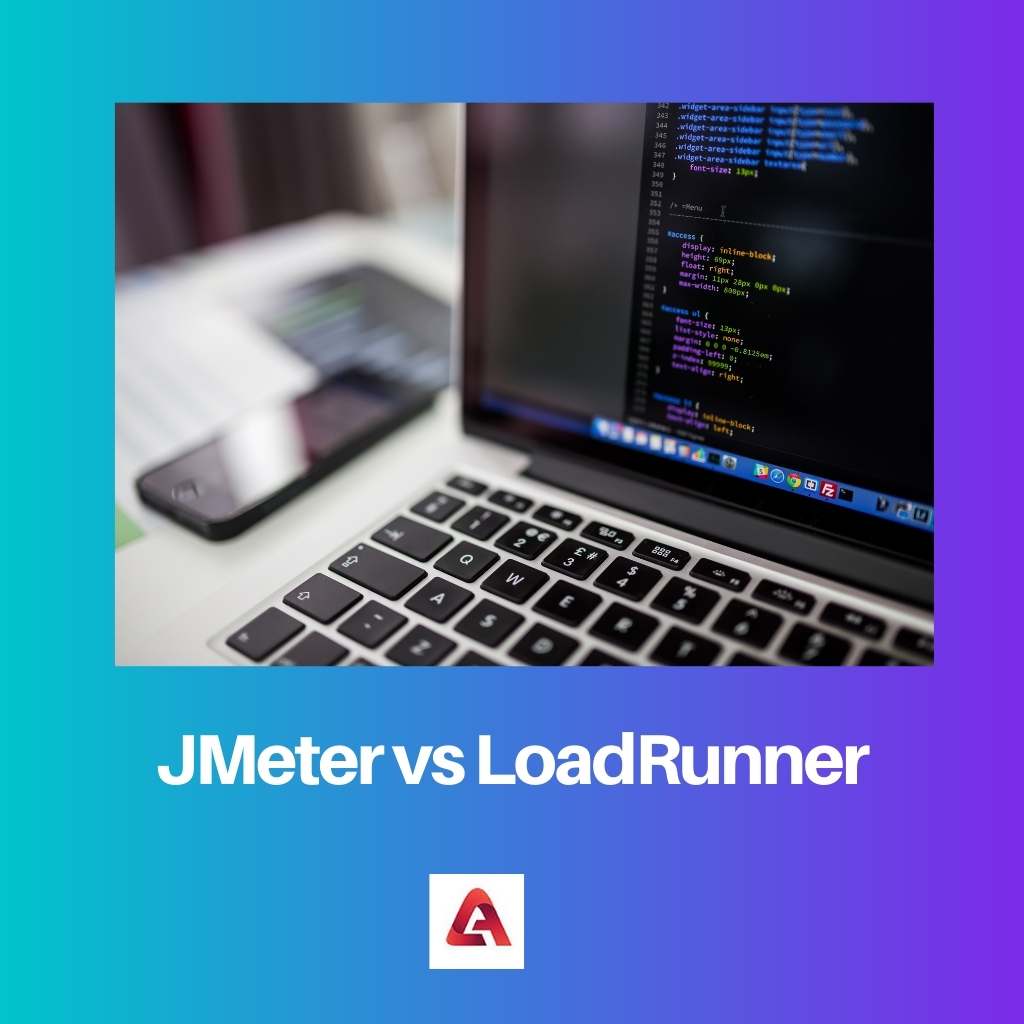Performance testing is required to examine an application’s stability, speed, efficiency, and sizing. In performance testing, the analytics of an application is obtained through various load-testing measures. Software like JMeter and LoadRunner is used for this purpose. Both these tools help users find bugs and threats in software applications.
Key Takeaways
- JMeter is an open-source load testing tool, while LoadRunner is a commercial product.
- JMeter excels in simulating and testing web applications, whereas LoadRunner offers broader testing capabilities.
- LoadRunner provides more comprehensive reporting and analysis features compared to JMeter.
JMeter vs LoadRunner
JMeter is a software used for the testing of software applications. It is freely available. Apache Foundation is the owner of JMeter. It has an unlimited load capacity. It is simple to use the software. LoadRunner is also a testing software, but people must pay to use it. Micro Focus is the owner of LoadRunner. Its load capacity is limited. It is complicated software.

JMeter is an Apache software that is an ideal choice for web application testing. Users can measure load strength as well as test performance. Users can get extensions and customize the software according to their needs. It doesn’t support JavaScript. It is not as proficient as paid tools. It comes with benefits like high portability, extensibility, simple installation, limitless load generation, and easy integration with plug-ins.
LoadRunner is a complex software that can identify performance bugs in web applications. It can find performance gaps. Users can test ERP software and Web 2.0 technologies. The individual units of the application can be tested. It can also forecast expenses for upgradation. It supports a wide range of applications, enables mobile testing and cloud testing, and gives an accurate analysis.
Comparison Table
| Parameters of Comparison | JMeter | LoadRunner |
|---|---|---|
| Price | Free | Paid |
| Efficiency | Less proficient | Highly proficient |
| Owner | Apache foundation | Micro Focus |
| Load Capacity | Unlimited | Limited |
| Complexity | Simple | Highly complex and developed |
What is JMeter?
JMeter is a load testing software developed by Apache Foundation. It is used for the web application, functional, and similar tests. It analyzes the functionality of the software. The efficiency of each software can be determined using JMeter. One can reap multiple benefits using JMeter as it is free and has an open-source license.
It has a user-friendly setup. It is a Java desktop application. The load testing results can be viewed in the formats like tables, files, charts, or trees. It can be installed easily, and users can advance it according to their needs as it provides extensive support. Database performance can also be evaluated using this software.
It has a graphical interface that enables the use of Swing graphical API and assures that the software can perform in any environment. Many protocols are accepted by JMeter, like HTTPS, LDAP, SOAP, etc. It has a multi-threading framework.
Many users send requests to a specific server and then provide statistics regarding functionality. This simple mechanism is used in JMeter. Unit tests are also available in JMeter. Spike testing and performance testing are the primary aspects of this software. It has access to offline test result support. It can engage multiple users through simulation to create a heavy load. Thus, it gives an accurate account of load testing.
It has a record and playback option that easily helps create scripts. Users can find many tutorials and support online from the JMeter community. So even beginners can find adequate information. Although scripting needs some advanced knowledge, users can still use the software.
What is LoadRunner?
LoadRunner is a software developed by Micro Focus that enables software testing. It can identify system efficiency through performance testing. It supports multiple protocols and several software platforms. The mechanism of working LoadRunner is recording and replaying user activities and creating a heavy load on the server to be tested.
The user activities are scripted, and then such scripts are run to create virtual users. The virtual users generate traffic, and thus a heavy load is created. After the test, the users can get the analytics as a file that can be opened through the Microfocus analysis tool. It gives the load testing result. The final test result is obtained in the form of pdf, HTML, Excel, or other formats.
The LoadRunner software has many components. Load generators, agents, virtual user generators, controllers, and analysis. The Virtual User Generator generates the scripts. It is in the programming language. Virtual loads are generated according to the need of load generators. The controller manages the load test. It organizes the workload modelling.
The agent enables communication with the Load generator and controller. Finally, the analysis provides the results of the load testing. The performance bugs can be detected using the report. LoadRunner, with its simple interface, gives a user-friendly experience. There is no need for physical users as virtual users can provide a sufficient real load on the server.
Also, the requirement for hardware is limited. All the virtual users can be handled single-handedly. The auto-correlation feature is an advantage to the users. It facilitates cloud performance testing. It can easily integrate with APM tools.
Main Differences Between JMeter and LoadRunner
- JMeter is free software, while LoadRunner is a paid resource.
- The user interface in JMeter is not as efficient as LoadRunner’s. LoadRunner has more features that give a more advanced performance. But JMeter has only limited features.
- JMeter can handle unlimited loads, but LoadRunner has a limit for load generation.
- Users can customize JMeter according to their needs. LoadRunner does not allow that. The existing features can only be used.
- Apache is the owner of JMeter. Micro Focus developed the LoadRunner, and HP owns it.
- JMeter can support Windows, Mac, and Linux. While LoadRunner cannot support Linux.



